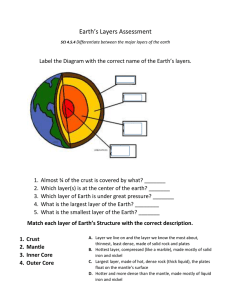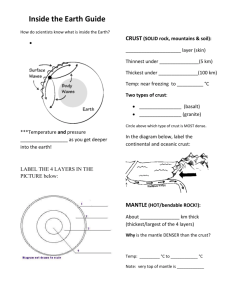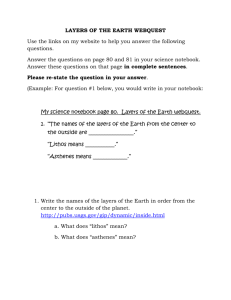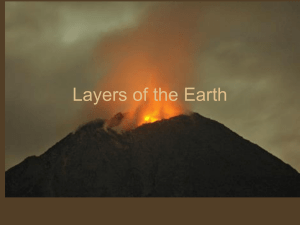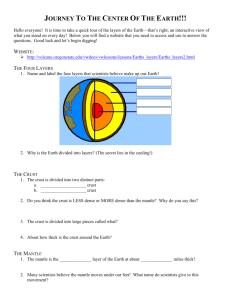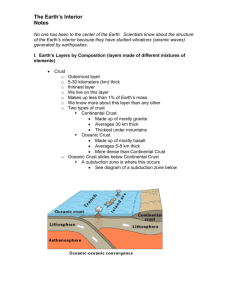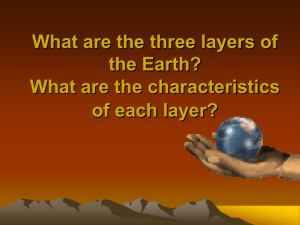Scale Model of the Earth worksheet
advertisement
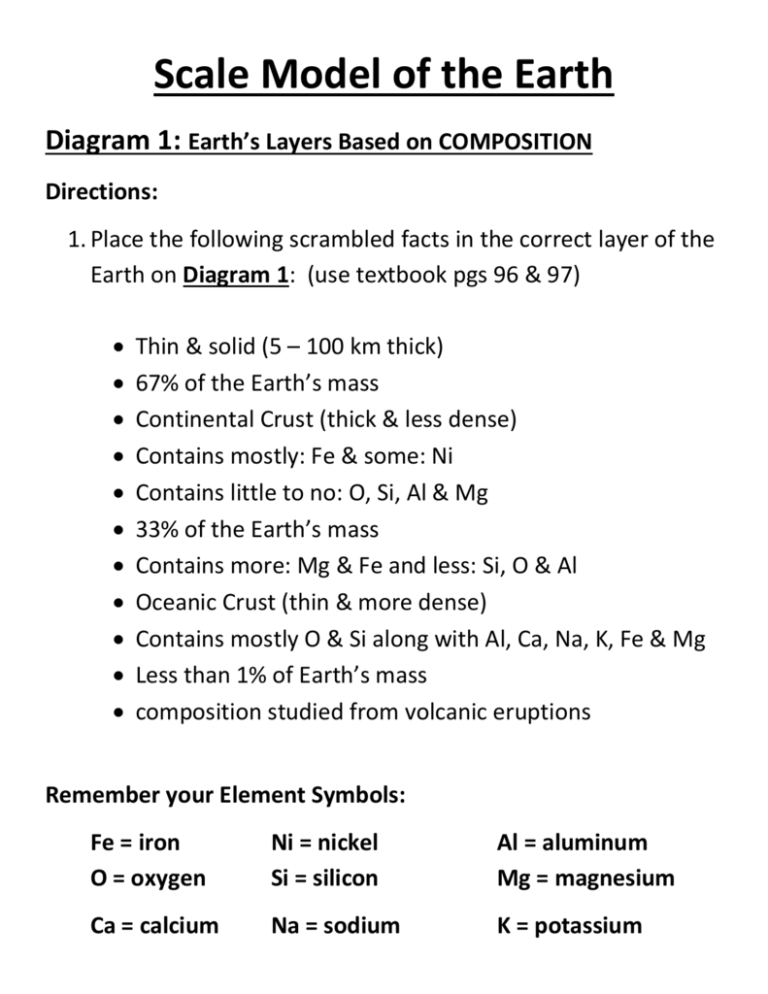
Scale Model of the Earth Diagram 1: Earth’s Layers Based on COMPOSITION Directions: 1. Place the following scrambled facts in the correct layer of the Earth on Diagram 1: (use textbook pgs 96 & 97) Thin & solid (5 – 100 km thick) 67% of the Earth’s mass Continental Crust (thick & less dense) Contains mostly: Fe & some: Ni Contains little to no: O, Si, Al & Mg 33% of the Earth’s mass Contains more: Mg & Fe and less: Si, O & Al Oceanic Crust (thin & more dense) Contains mostly O & Si along with Al, Ca, Na, K, Fe & Mg Less than 1% of Earth’s mass composition studied from volcanic eruptions Remember your Element Symbols: Fe = iron O = oxygen Ni = nickel Si = silicon Al = aluminum Mg = magnesium Ca = calcium Na = sodium K = potassium Scale Model of the Earth Diagram 1: Earth’s Layers Based on COMPOSITION CRUST MANTLE CORE Directions: 2. Place the following scrambled facts in the correct layer of the Earth on Diagram 2: (use textbook pgs 98 & 99) Liquid due to heat Solid due to great pressure Plastic layer (rock that flows slowly) Rigid layer, divided into tectonic plates Found within the mantle Strong & thick, lower part of the mantle Contains the crust & top of the mantle 3. Answer the Additional Questions found below Diagram 2. 4. Color-code the layers on both Diagram 1 & 2. Diagram 2: Earth’s Layers Based on PHYSICAL STRUCTURE ASTHENOSPHERE LITHOSPHERE MESOSPHERE OUTER CORE INNER CORE ADDITIONAL QUESTIONS 1. Why is the core more dense than the mantle and crust (p. 96)? 2. What makes ocean crust more dense than continental crust (p.96)? 3. How do we know anything about the interior of the Earth (p.102)?
